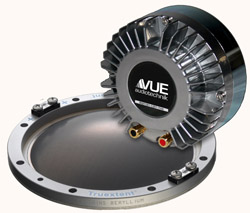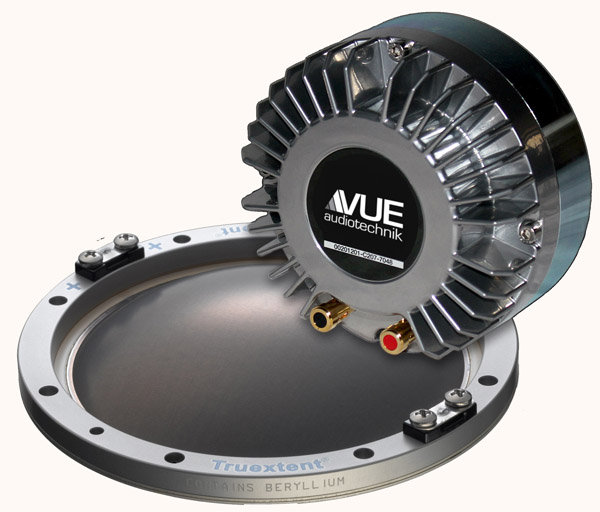Since its formation, VUE Audiotechnik has been engaged in a strategic development partnership with Materion Electrofusion, the world’s leading supplier of genuine beryllium. VUE’s goal is to develop an expanding family of high performance compression drivers that benefit from beryllium’s unique ability to dramatically improve HF performance.
Note: Go here to learn about the latest implementation of this driver technology in the new VUE al-4 subcompact line array.
The first results of this collaboration were revealed last June in the form of VUE’s h-12 and h-15 two-way systems, which benefit from a new compression driver with a Materion Truextent®; beryllium diaphragm at its core. This compression driver allows the h-Class to deliver significant improvements in both HF output and response linearity.
The h-12 and h-15 are only the beginning, and VUE is actively developing more beryllium-based designs intended for a broad mix of applications.
This article will explore beryllium as a high performance alternative to aluminum and titanium. We’ll cover the history of beryllium as an acoustic material, and detail modern manufacturing methods that are re-igniting interest in beryllium for advanced transducer design. Comprehensive data covering theoretical and actual performance tests will be presented as well.
Beryllium Perspective
A relatively rare metal, beryllium has long been used in high-tech applications ranging from x-ray tubes to scientific instruments and precision aerospace components. Beryllium’s advantages for transducer design have also long been acknowledged. Its exceptionally high stiffness-to-mass ratio is far beyond that of aluminum or titanium, allowing beryllium to deliver much greater high frequency output and lower distortion.
Early successes, such as Pioneer’s TAD drivers in the 1970s, proved that beryllium could indeed deliver on this promise, and over the years companies such as JBL and Focal have continued to offer a limited number of beryllium-based designs.
Despite its many benefits, beryllium has never been adopted as widely as aluminum or titanium, and has mostly been relegated to esoteric hi-fi systems and high-end pro audio components. This is due largely to expense and complexity, since beryllium is rarer and traditionally more difficult to isolate and refine.
But modern day refining and manufacturing techniques are reducing the cost of beryllium, while at the same time further enhancing its durability. As a result, VUE Audiotechnik is aggressively pursuing beryllium-based designs in an effort to advance loudspeaker performance and reliability.
Changing The Game
Early beryllium components were manufactured through a method known as PVD (Physical Vapor Deposition), which is a process that involves depositing thin layers through the condensation of the vaporized element onto a form. Unfortunately, this method not only limits thickness, but also produces a relatively coarse grain structure that is more likely to generate potentially harmful respirable particles if breakage occurs.
In recent years, however, Materion Electrofusion has pioneered the use of rolled foil beryllium for acoustic applications. Their Truextent beryllium foil benefits from the rolling process by achieving a more durable grain structure and the minimization of residual internal strains. As a result, rolled foil beryllium components are significantly tougher and when failure does occur, they generally do not result in respirable particles.
In addition to the improved durability, Materion’s efforts have also resulted on manufacturing efficiencies that reduce cost. Thanks to these efforts, the potential now exists for beryllium-based transducers to expand beyond just the high end and into broader sound reinforcement applications.
















